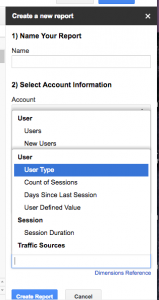No matter how talented you are as a customer experience professional, you need a team to create a world-class VoC program.
In this blog post, we are focusing on the internal help you will need.
The Information Technology (IT) Department
Let’s begin with the information technology (IT) department. IT should be your best friend in making your VoC program happen—as long as you keep an eye on the costs.
IT should be your best friend as you make your VoC program because IT controls the most up-to-date information you need about the customer experience.
In a telecommunications company, for example, the IT department has a system that houses all the technician appointments for the day, including specific customer information such as email address and phone number.
They can also tell you how long someone has been a customer, how much they pay for service each month, and their billing trend over time.
As the lead of the customer experience team, you have to be multi-functional, with the right mindset and communication skills to connect with different personalities. This will help when interacting with your IT department, in that you’ll have to be incredibly specific about what you need.
If you allow an IT department to lead the conversation about what could be available, the bill will likely be too high and the timeline will probably take too long. IT might say, “That’s not possible,” when what they really mean is, “I don’t want to do that.”
The minimum support that you actually you need from IT is something called a flat file. This is often an Excel or CSV file that contains a list of customers who recently had an experience with the company. Once you specify how frequently you need this information to be collected—such as daily, twice a day, or weekly—you can request it from IT, and then upload the flat file with customer information into your VoC software platform so you can start sending out surveys.
IT can also help create an automated system for this process, such as connecting a point-of-sale system or CRM to your VoC software platform via an API. Automated this process can make it so that you or your team don’t have to manually upload files or check them for accuracy.
The Analyst
In addition to IT, you’ll need assistance to help you understand what all of this customer feedback means.
Sometimes, you’re fortunate to have your own analyst.
If not, look to your company’s business analytics and/or business intelligence department. They can be very helpful in connecting the dots and making sense of customer feedback.
Legal & Procurement
The other internal departments that you will likely need to interact with are legal and procurement.
At times, legal will need to approve the questions that you are asking customers. This is especially true in highly regulated industries, such as pharmaceuticals.
Legal will also come into play if you decide to engage with a third-party partner. Legal can help you create a contract with that partner.
A related department, procurement, may also get involved if you decide to go out to “bid” for VoC software and services. This group will help you craft a Response for Proposal (RFP) that you can send out to multiple VoC providers.
Procurement will help you ask the right questions, consolidate responses, choose the right partner, and negotiate the cost/terms of the program.
Conclusion
Internal stakeholders are often forgotten when creating a VoC program. Keeping them top of mind will pay huge dividends.
Business & Finance Articles on Business 2 Community
(24)
Report Post





